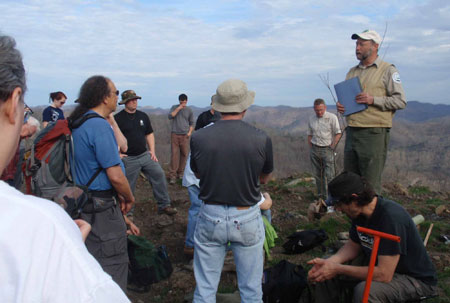With the coal industry in decline, coal-reliant communities as facing challenges about their economic futures. Despite the need for the federal government’s presence in alleviating uncertainties, President Trump’s FY 2019 budget request cuts funding for programs and grants that aid the Appalachian regions that have been hit hardest by the failing coal industry. Yet the Administration remains ruthlessly consistent in its dismantling of environmental regulations, even when they come at the cost of the communities they claim to prioritize.
Among the programs that have been proposed to be nixed by the Trump Administration is the Abandoned Land Mine (AML) Pilot Program that addresses environmental hazards posed by legacy mine sites and aims to revitalize coalfield communities. Two-hundred years of coal mining has left millions of Americans living hazardously close to abandoned mines; 5.5 million Americans in the Appalachian Coal Region live within a mile of an AML. These families face the risks of contaminated groundwater, injury from unsteady infrastructure, and toxic pollution of air and soil.
Populations within 1 mile of an AML site by state and percent of state population
Source: C. M. Mayne, OSMRE/AmeriCorps May 2016 Report
Prior to 1977, there were no federal laws that regulated surface mining in the coal industry. Mining companies often abandoned mines, without concern for the risks they posed to nearby communities and environment. The Surface Mining Control and Reclamation Act of 1977 is the primary federal law that regulated the environmental effects of coal mining in the US, establishing guidelines for existing and future coal mines while financially supporting reclamation of abandoned mines. Since 1977, coal companies have had to pay a fee for every ton of coal mined, that went towards cleaning up abandoned mines.
Since the decline in the coal industry, communities have called for accelerated abandoned mine reclamation. The RECLAIM Act, in conjunction with the AML Fund, among other programs and funding opportunities have supported communities in not only protecting their environment and health, but also providing economic opportunities for those facing the brunt of coal’s decline.
Mining reclamation efforts and subsequent long-term economic revitalization opportunities have enabled us to begin remediating the 6.2 million acres of land and water damaged by AMLs. In 2016, $30 million were distributed for the Abandoned Mine Lands Reclamation Pilot Program in Kentucky, Pennsylvania and West Virginia, the three Appalachian states with the largest number of abandoned mines. The pilot programs, which had a funding of $105 million in 2017, provided the states with the highest amount of unfunded coal-related problems that are classified as Priority 1 and Priority 2 abandoned mine lands sites (Kentucky, Pennsylvania, West Virginia, Alabama, and Ohio) an opportunity to restore the environment and boost employment. The pilot programs in particular, which is being threatened by budget cuts, provide an opportunity to identify projects that both reclaimed mines and provided employment for ex-coal workers that were forgotten by coal companies.

Sierra Club Provided Support for a Large Reforestation Effort of Abandoned Mine Lands in Kentucky (2012)
Rather than recognizing the benefits of the AML Pilot Program to communities across Appalachia, the Trump administration maintains its stubborn commitment to revoke all environmental regulations. In justifying the elimination of $105 million to AML Reclamation Program, the Administration claimed that it “Plans to help coal country by streamlining permit approvals and eliminating unnecessary regulations, such as lifting the moratorium on coal leasing on public lands, rolling back the Clean Power Plan, and helping to nullify the Stream Protection Rule.” This action, alongside the other cuts to environmental protections in the FY 2019 budget, perpetuates the precedent set by the federal government to prioritize the wants of corporate coal executives over miners, coal workers, and communities.